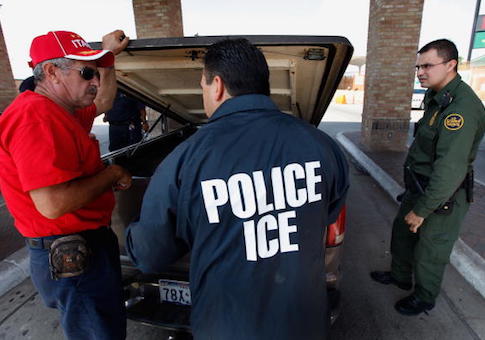Prosecutions of criminal immigration offenses are projected to rise almost 20 percent in FY 2018, a new report from the Transaction Records Access Clearinghouse (TRAC) shows.
TRAC bases its estimates on the 7,020 new criminal immigration prosecutions in March of 2018, an increase of 23.9 percent from the previous month. TRAC projects that, if the federal government continues to prosecute criminal immigration offenses in accord with this trend, there will be more than 70,000 prosecutions by fiscal year's end.
Criminal immigration offenses importantly do not include simple illegal immigration, which is a civil, rather than criminal offense. Rather, criminal offenses include acts such as reentry of a previously deported person, the smuggling of illegal immigrants, or visa or other document fraud.
Prosecutions for criminal immigration offenses are historically quite low, TRAC noted, with fewer than 20,000 per year under the last term of the Clinton administration and the first term of the Bush administration. They increased some under Bush's second term, but only really took off with the swearing in of President Barack Obama. The number of criminal immigration prosecutions almost reached 100,000 in 2013.
Immigration prosecutions began to decline thereafter, likely due to a more selective prosecution policy during Obama's second term. That trend continued in the first year of President Donald Trump's administration: Fiscal year 2017 saw the fewest prosecutions of any administration in a decade. This is likely due in part to the conspicuous decline in immigration in Trump's first year, a phenomenon often referred to as the "Trump effect."
However, as immigration rates rise again, so too are prosecutions. The most common charges faced by defendants are entry at improper time or place and reentry subsequent to deportation, combined making up well more than half of all charges. Charges unsurprisingly concentrate within the federal judicial districts along the southwestern border; a previous Free Beacon analysis found that those regions were responsible for the plurality of federal offenses, primarily due to the concentration of immigration offenses.
While immigration charges concentrate along the southwestern border, certain districts are seeing less activity than they used to, TRAC noted. Texas's northern district, Florida's southern district, and the eastern district of Michigan were all immigration crime hot spots twenty years ago, but have now fallen out of the top ten.
This renewed concentration of criminal immigration offenses along the southwestern border helps to explain why earlier this month, Attorney General Jeff Sessions implemented a "zero tolerance" policy for immigration offenses in that region. Under the Obama administration, the Department of Justice generally sought to prosecute only violent or criminal immigration offenders. Sessions has instructed U.S. attorneys to prosecute all offenders to the maximum extent allowable by law.
This zero tolerance has been shown historically to drive down illegal immigration levels, according to Sessions, a claim he based on analysis by the U.S. Customs and Border Protection agency which has in turn been questioned by the Department of Homeland Security.
